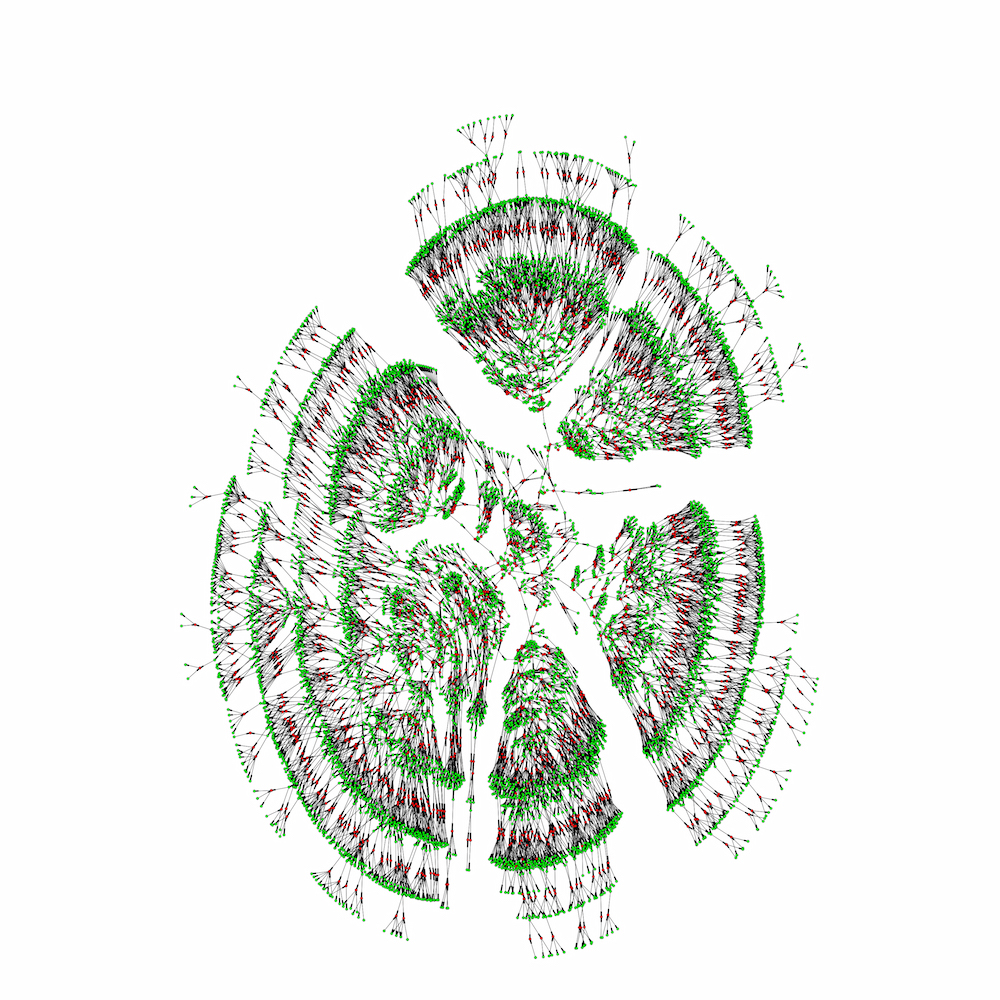The Number of People on a Family Tree Is Grater Than the Amount of People Ever Lived
Giant Family unit Tree of 13 Million People Just Created
The researchers, who sifted through 86 million profiles of people on the public genealogy site Geni.com, were interested in how human migrations and union choices had inverse over the past 500 years.
"Through the hard work of many genealogists curious most their family unit history, we crowdsourced an enormous family tree — and boom — came up with something unique," the report's senior writer, Yaniv Erlich, a calculator scientist at Columbia University, said in a statement. Erlich is also the main science officeholder of MyHeritage, a genealogy and DNA testing company that owns Geni.com, the platform that hosts the data used in the study. [Genetics by the Numbers — 10 Tantalizing Tales]
Budding tree
Afterwards downloading the 86 million profiles, the researchers used mathematical graph theory to organize and double-check the accuracy of the information. In addition to smaller family trees, they put together the giant one of 13 million people, connected by ancestry and marriage, spanning an average of 11 generations. If the data had gone dorsum some other 65 generations, the researchers could have identified the group'due south common ancestor and completed the tree, the researchers noted.
To confirm that the Geni data was representative of the general U.S. population, the researchers compared the Geni profiles with about lxxx,000 publicly available death certificates of people from Vermont, from 1985 to 2010. Overall, the two data sets had highly similar socio-demographics — meaning that the Geni-made family tree was a expert representation of people in the Us, the researchers said.
The tree is, "to my noesis, by far the largest prepare of families to appointment," Mark Stoneking, a professor of biological anthropology at the Max Planck Establish for Evolutionary Anthropology in Leipzig, Germany, who was not involved in the study, told Live Science in an email. This study shows "the power of leveraging personal ancestry data to get all sorts of novel information, [which] nobody really thought of before," Stoneking added.
Marriage mysteries
The newly created family tree shows that as times changed, so did the distance people traveled to discover a marriage partner. Before 1750, most people in the U.s. married someone who lived within 6 miles (10 kilometers) of their own birthplace. Simply 200 years later, people built-in in 1950 tended to travel further to discover that perfect someone — on average tying the knot with someone who lived about 60 miles (100 km) from where both of the spouses were built-in, the researchers plant.
"It became harder to observe the dearest of your life," Erlich joked.
Moreover, between 1650 and 1850, it was mutual for fourth cousins to ally. Nowadays, it's culturally taboo in the U.S. to marry someone so closely related to y'all, which may explicate why marrying seventh cousins is more common today, the researchers said.
The family tree besides revealed this curious tidbit: From 1800 to 1850, even though people traveled farther than usual to find a partner — virtually 12 miles (19 km) on boilerplate — they were still more likely to midweek someone who was a quaternary cousin or closer, than information technology was for them to marry a more afar relative, the researchers discovered. This debunks the idea that when people travel greater distances, they say "I practise" to people who are less related to them. [x Wedding Traditions from Around the World]
Instead, it was likely irresolute social norms that prompted people to stop marrying their close relatives.
"Nosotros hypothesize that changes in 19th-century transportation were non the primary cause for decreased consanguinity," the researchers wrote in the study. "Rather, our results propose that shifting cultural factors played a more than important role in the recent reduction of genetic relatedness of couples in Western societies."
In improver, over the past 300 years, women in North America and Europe tended to migrate more than men did, the researchers institute. Notwithstanding, when men migrated, they journeyed much farther, on boilerplate, than women did, the study authors institute.

Life bridge decoded
The researchers took a gander at how genes influence longevity. They analyzed data from three 1000000 relatives built-in between 1600 and 1910 who had lived past the age of 30. This data ready excluded twins, equally well every bit people who died in the U.S. Civil State of war, World State of war I and Earth State of war Two, or in a natural disaster.
Genes accounted for 16 per centum of longevity variation, the researchers learned afterward comparing each person's life span to those of their relatives, besides equally the degree of separation between such relatives. This is on the depression stop of previous estimates, which by and large range from xv percent to thirty pct, the researchers said.
The finding shows that people with good longevity genes may live an average of five years longer than people without those genes. Only, "that'southward non a lot," Erlich said. "Previous studies take shown that smoking takes ten years off of your life. That means some life choices could affair a lot more than than genetics."
The 13-million-person family unit tree is available for academic enquiry at FamiLinx.org, a website created by Erlich and his colleagues. The data on FamiLinx is anonymized (although, in 2014, Erlich noted that it's not terribly difficult to place people in anonymous profiles, Live Science previously reported), but people tin bank check Geni.com to see whether a family unit fellow member has added them to the site. If y'all find yourself on Geni.com, there's a skillful take chances you fabricated it onto the behemothic family tree, the researchers said.
The study was published online today (March 1) in the journal Scientific discipline.
Original article on Live Science .
morrisoncolmilluke.blogspot.com
Source: https://www.livescience.com/61905-giant-family-tree.html

0 Response to "The Number of People on a Family Tree Is Grater Than the Amount of People Ever Lived"
Post a Comment